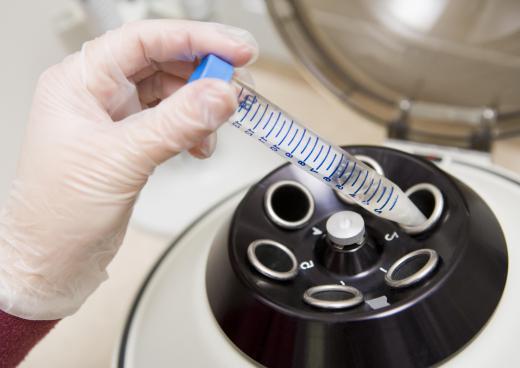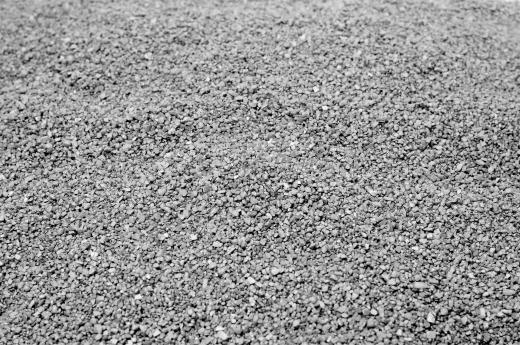A centrifugal separator is a machine that uses centrifugal, gravitational, and inertial forces to divide two or more substances. This device can be used to separate solutions, gas mixtures, or other matter that can be physically parted. Centrifugal separation occurs when a mixture in the machine's chamber is spun very quickly, and heavy materials typically settle differently than lighter ones. Centrifugal separators have a wide variety of applications, in many industries.
When a mixture enters the spinning chamber of a centrifugal separator, distinct substances within it are affected differently by the force created by the spinning. For example, gravitational force generally pulls heavier particles down more quickly than lighter ones, and the force of inertia affects the mixture as it spins. As the substances separate, they can be collected in various ways. Sometimes, they are collected mechanically, but, other times, they are physically separated. One method of this can be by screening.

Heavier solid particles are often allowed to settle as they slide down the walls of the separator. They are then typically collected from the bottom. Generally, a gas can be purified by spinning any particulate matter and moisture out of it. The gas can then be collected, as it rises to the top and through an exit opening in the centrifugal separator. Liquids of different weights and viscosities may be divided into differing chambers of a separator as it moves.

Some of the applications in which a centrifugal separator can be used include dividing cream from milk, sand from gravel, and oil from water. The food and beverage industries often use these machines in the making of syrups, sugars, and malt liquors. Manufacturers of paints and varnish also use these machines, as do pharmaceutical manufacturers, animal feed makers, and the ceramics and abrasives industries.

A particular kind of machine, known as a centrifugal water separator, is often used to remove water from compressed air. This is important because water in the air can cause rust to occur in the metal components of a compressor, and in any attached machines or tools that utilize the compressed air. Typically, any condensate is spun out of the air by the separator, and collected in bowls where it is then pumped out of the compressor.
As the technology of the centrifugal separator has progressed, new applications have been found for its use. There are devices known as ultracentrifuges that are being used to separate larger molecules into their components. This advancing technology is particularly useful in the pharmaceutical industry.
